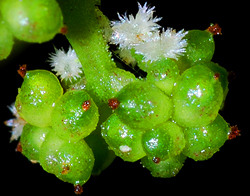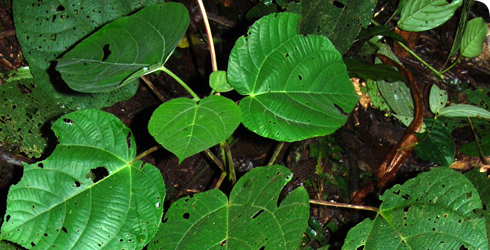Urera fenestrata
Urera fenestrata the chichicaste is a small tree from Central America.
Urera fenestrata is a member of the nettle family which includes approximately 2,000 species of herbs, shrubs, vines and trees worldwide. Only a few of them have the stinging hairs for which nettles are known in Europe and North America.
The local name chichicaste comes from the stinging hairs 'chichicaste’ found on Urera fenestrata. 'chichicaste' derives from the Nahuat word ‘tsijtsíkast’ meaning ‘to vibrate’ referring to the sensation once stung.
Urera fenestrata was discovered as part of the exploration of La Amistad national park in Panama and also as part of a Museum lead project funded by Defra to support the conservation of this area. Urera fenestrata is one of several species new to science that were described by staff at the Museum in 2009.
Species detail

Urera fenestrata small brightly coloured and fleshy berries and for their stinging hairs. © A Monro
This species is one of three described recently in a revision of the genus Urera in Central America as part of the Flora Mesoamericana project (Monro & Rodriguez, 2009). Members of this genus are unusual in the nettle family in bearing small brightly coloured and fleshy berries and for their stinging hairs.
Urera fenestrata is unusual in the nettle family in having hollow stems with small holes or windows in them that are used by ants as nesting sites. Presumably the tree provides shelter to the ants, that in return defend the plant! This is the first record for such an association for this genus.
-
Taxonomy
Get a description of the form, structure and appearance of Urera fenestrata and find out about the evolution of the species.
-
Distribution
Find out about the areas to which Urera fenestrata is restricted and the types of habitat it is typically found in.
-
Conservation
Discover the conservation status of Urera fenestrata.
-
References
Get reference material for Urera fenestrata.
Author
Dr Alex Monro
Researcher, Tropical Plant Diversity, Department of Botany.
